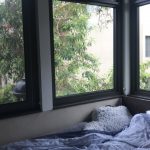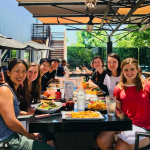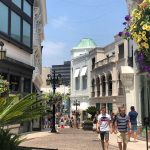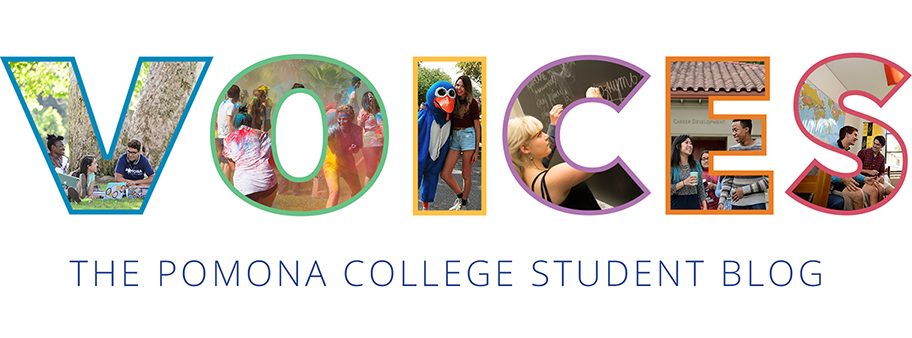By Calder Hollond ‘21
One of the most daunting aspects of a typical school year at Pomona can be weaving a summer internship search into an already busy schedule of classes, on-campus jobs, studying, and other extracurriculars. Many students at Pomona get some sort of summer internship, whether it’s part-time or full-time, at home or in a different city, paid or unpaid. These can be a great source of experience in a certain career field and can be helpful for getting connections in an industry you’re interested in.
While many students get internships at nonprofits or big companies, other students take part in some sort of funded research. Pomona itself has a program called Summer Undergraduate Research Program, or SURP, that provides funds for students to do research either on campus with a professor, independently, or off-campus with a professor at a different institution. These aren’t just limited to STEM fields–I know several students who did SURPs in English, gender studies, and other humanities fields.
Towards the beginning of the fall semester last year, I knew that summer research was something that I was definitely interested in. As a pre-health student with a humanities major, I take fewer science classes than your average pre-health student, so I wanted a way to show that I had science experience that went beyond the bare minimum of medical school requirements. I also wanted to find out whether research was something I was really interested in. I talked to my intro chemistry and biology professors to ask about the process, and I went to the Chemistry Department Research Night, where they showcase the work of different labs and talk about which labs are looking to add students. When I saw that my Chem 1a professor had space in her lab, I set up a meeting to learn more about it and express my interest, and a few weeks later, she told me that I got the position!
I began planning for an 8-week research project on campus over the summer. Professor Liu’s lab researches the genetics of Vibrio cholerae, the bacteria responsible for causing cholera, and my research specifically focused on the collection of genes that regulate the intake of mannitol, an important carbon source for the organism. Throughout the summer, I worked with my professor to design experiments and run tests that examined the interactions between these different genes – all part of the mtl, or mannitol operon – to learn more about how V. cholerae regulates its mannitol uptake through molecular genetics.
Most students doing research on campus are funded through SURP, which requires you to send in an application mid-spring. If selected, you’ll receive paychecks that are funded by Pomona donors. For me, it was a little different: Professor Liu recently received an NIH grant, and I was funded through that. The process for both types of funding is essentially the same, though: you log your hours on Pomona’s timesheet system and receive a paycheck every two weeks.

For housing, I knew that I wanted to live on campus. This process was thankfully very easy, and it helped that I didn’t have to worry about figuring out a lease or finding interim storage. Pomona provides housing for all of the students who want it over the summer, which is usually about 200 or so, and they house us in the centrally located (and air-conditioned!) senior dorms of Dialynas and Sontag, as well as the nearby Norton Clark residence hall. The rent is $15 per day, which works out to $420 per month, but what I liked most about it was that you pay per day beginning with the day you start and ending with the day you leave (although you do have to pay for any vacation time in the middle), meaning I didn’t have to worry about the timing of a monthly lease. I stayed in a 6-person suite in Dialynas, where we each had our own single and shared a common room with 2 bathrooms, a fridge, and cabinets for food. Dialynas also has communal kitchens on each of its floors, which was especially helpful since most students on campus cook for themselves.
This was an aspect of the summer research experience that I was initially worried about. I had some experience making meals for myself at home, but they weren’t exactly gourmet quality, and I’d never done it for longer than a couple weeks, let alone an entire summer. I also was a bit nervous about grocery shopping while balancing buying healthy food, getting a variety of foods from week to week, and staying within my budget. Thankfully, it wasn’t too bad once I got the hang of it–there are several grocery stores that are just a drive or bike ride away from campus (my personal favorite was Sprouts for the affordable produce), and Pomona also did a great job of providing lots of free on-campus meals that both saved me some money on groceries and also made a space for students and faculty to come together after a day of work.

While working in the chemistry department, I also was part of the chem department’s Friday potlucks. Every Friday each lab group would take turns taking the day off of lab work and cooking a meal for the whole department (about 50 people). My lab made dumplings from scratch, while some other labs turned out tacos or Brazilian barbecue. Outside of my department, there were tons of other opportunities for free food, from a Chipotle-catered World Cup watch party during lunch to dinners hosted by Housing & Residence Life or the Office of Admissions. After taking advantage of all the free food and making sure to get the best deals at the grocery stores, I spent an average of $60 per week on food. For students who are interested, Frary Dining Hall is open during the summer, but once I got into the groove of making my own meals, I decided to stick with that rather than buying meal swipes.

After all these logistics, you’re probably wondering: what was the actual summer experience like? The main difference is that campus is much, much emptier over the summer than it is during a school year, and it’s weird to walk past the student center or the quad and not see dozens of students studying or grabbing a bite to eat. Social life is definitely different, but I enjoyed the way that it made me branch out and form new friendships with the people in my lab, my department, my dorm, and even with fellow 5C students who had internships elsewhere in the LA area. Depending on the time of day, LA is just a $5-10 train ride away, and I enjoyed having some time to explore campus by myself after I was done with lab for the day without the impending pressure of problem sets or midterms to think about.
The research itself was also a great experience, and I ended the summer expecting to pursue some sort of research again next summer, whether at Pomona, in a different lab, or even independently. I loved being able to guide my own research under the direction of my professor, working on the project she assigned me but being able to decide for myself how I should carry it out day to day. I learned how to do long-term research while keeping all my procedures and results organized and easy to understand or replicate, and I’ve actually continued research in the same lab into this semester, extending the projects that I worked on over the summer and adding some new ones as well.
For first- or second-year students or prospective students interested in doing a SURP at Pomona, I would highly recommend it! I’d advise anyone interested to reach out early to professors, not just to see if they’re taking new students but also to ask if they know anyone else in their department who would be interested in taking on research students. Go to events like the PCIP/SURP (Pomona College Internship Program/Summer Undergraduate Research Program) poster conference in September and also different departments’ research nights to talk directly to professors or student research assistants and ask any questions you have. It’s a great way to experience Pomona in a different way over the summer and explore what it’s like to do independent research!
